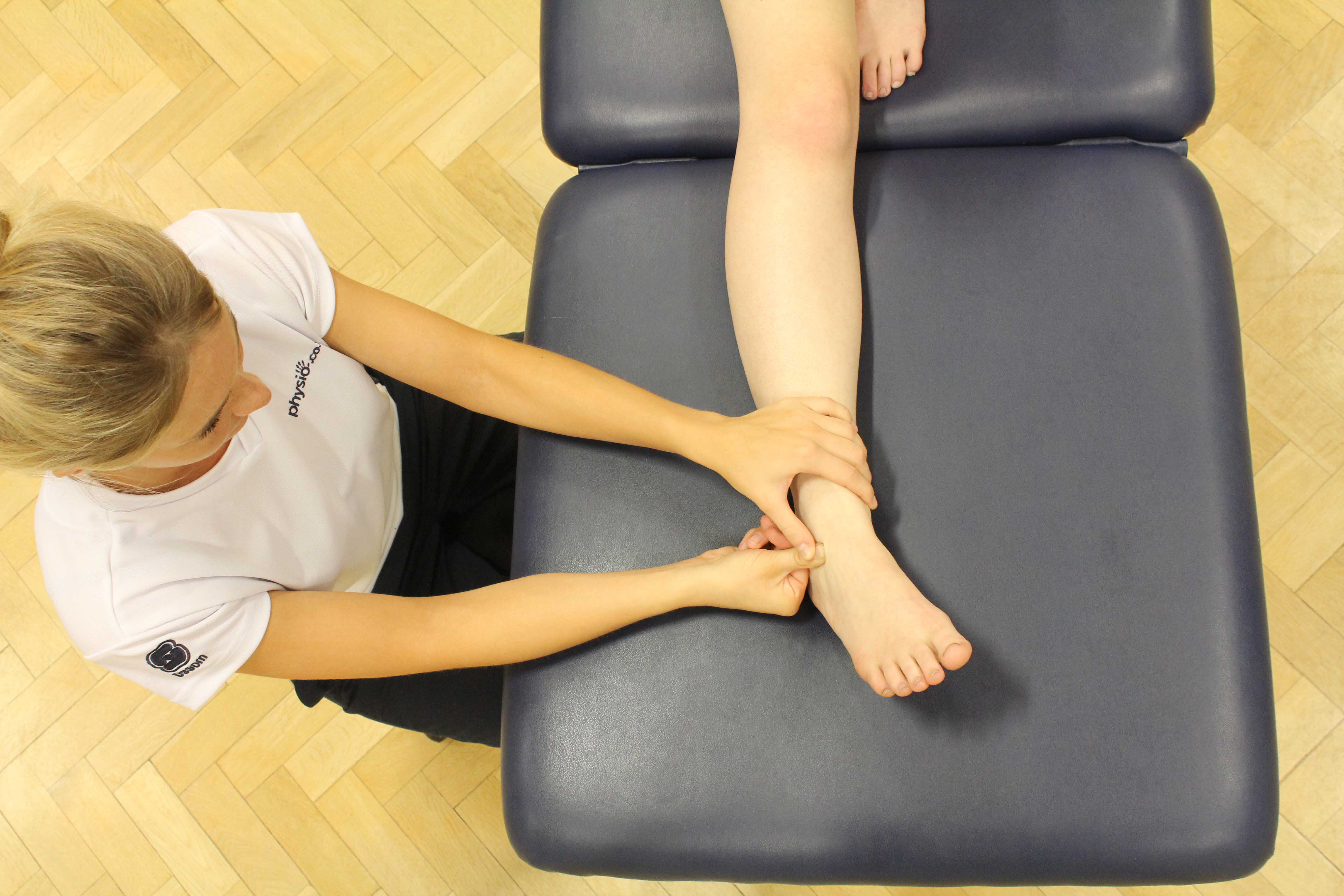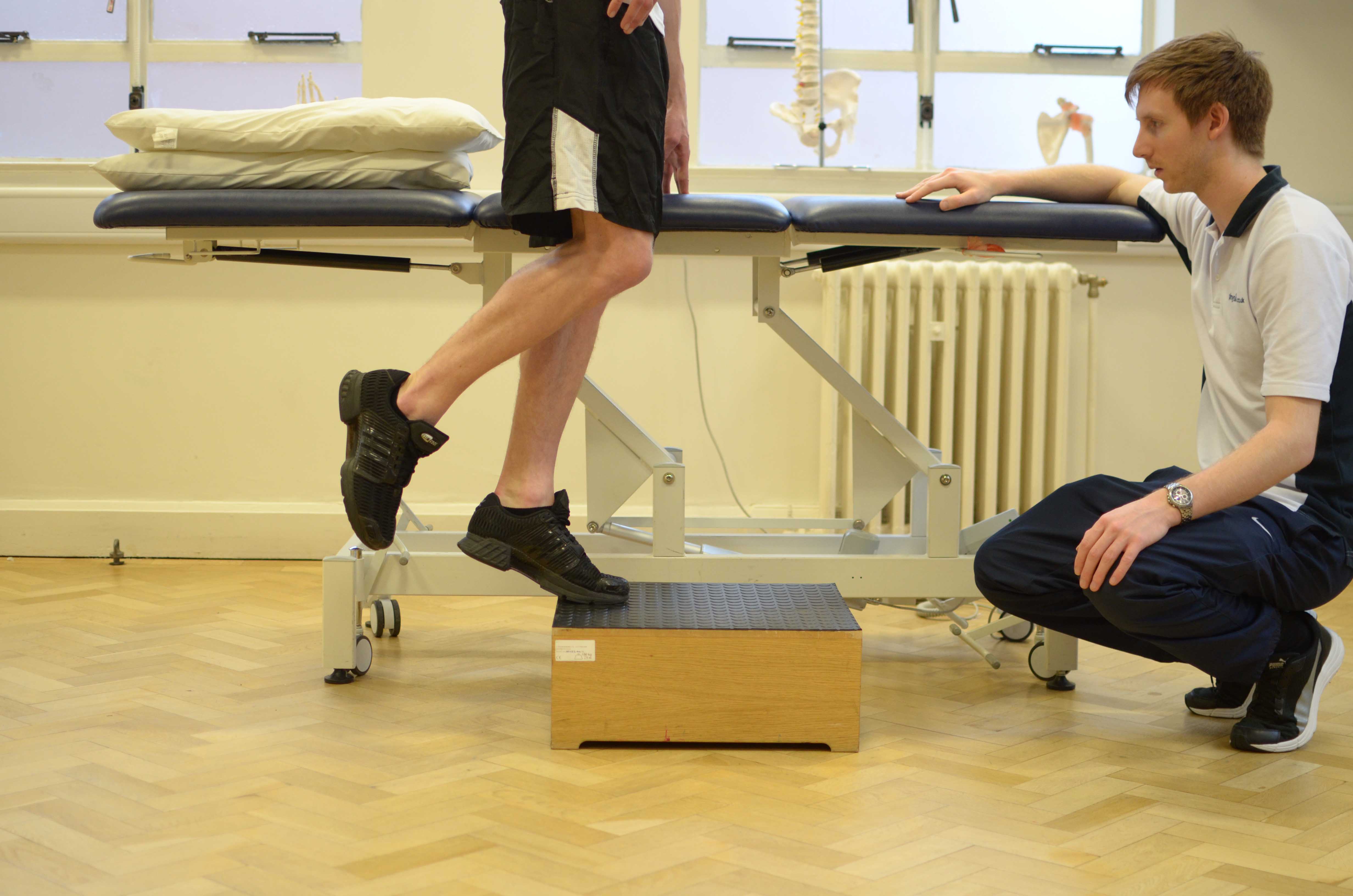What is a dislocation of the peroneal tendons?
The peroneal tendons lie in a groove behind the bony bump on the outside of the ankle. Tough bands of tissue (peroneal retinaculum) pass over the peroneal tendons to keep them in this position. If these bands are damaged, the peroneal tendons are able to move out of their groove. This is called a dislocation of the peroneal tendons. Physiotherapy is an important treatment for dislocation of the peroneal tendons.
 Above: Friction massage applied to the inferior peroneal retinaculum ligament.
Above: Friction massage applied to the inferior peroneal retinaculum ligament.How does a dislocation of the peroneal tendons happen?
For the peroneal tendons to dislocate, the peroneal retinaculum has to have been injured. Frequently this occurs when the foot and ankle are forcibly twisted inwards. This mechanism commonly sprains the ankle ligaments but the peroneal retinaculum may also be damaged.
What are the symptoms of a dislocation of the peroneal tendons?
You may experience a ‘popping’ sensation as the retinaculum is injured. This may be associated with swelling and tenderness behind the bony bump on the outside of the ankle. The peroneal tendons are no longer held down and, therefore, they may move out of the groove (dislocate) and remain out following the injury. This may be apparent when comparing the appearance of the outside of the injured ankle to the other ankle. Alternatively, the peroneal tendons may move out of the groove (dislocate) and over the ankle bone as the peroneal muscles are contracted and then return to their original position when the muscles are relaxed. This movement may be seen and felt as you point your toe.
Additional symptoms may include:
What should I do if I have a dislocation of the peroneal tendons?
If you suspect that your peroneal tendons are dislocating you should arrange an assessment with a specialist. The physiotherapists at Physio.co.uk can confirm your diagnosis and refer you to an appropriate professional. To help reduce the swelling and pain in your ankle, the RICE regime should be followed (Rest, Ice, Compression, Elevation).
Physiotherapy treatment for a dislocation of the peroneal tendons.
Following surgery, your physiotherapist will rehabilitate your ankle to enable you to return to normal activity. Treatment often involves:
Could there be any long-term effects from a dislocation of the peroneal tendons?
If the peroneal tendons are dislocating, surgery is required to fix the problem. Following surgery, there are usually no long-term effects.
 Above: Progressive ankle strengthening exercises supervised by specialised physiotherapist
Above: Progressive ankle strengthening exercises supervised by specialised physiotherapistPlease call Physio.co.uk on 0330 088 7800 to make an appointment or book online.

 0330 088 7800
0330 088 7800


































